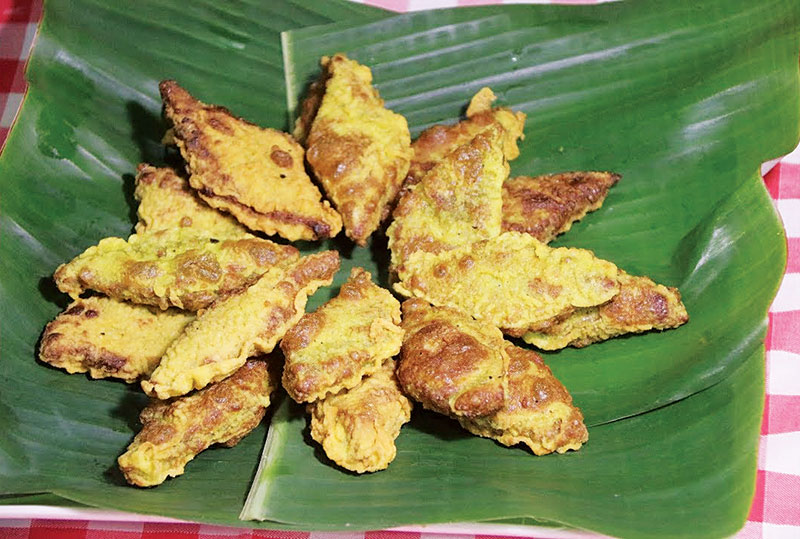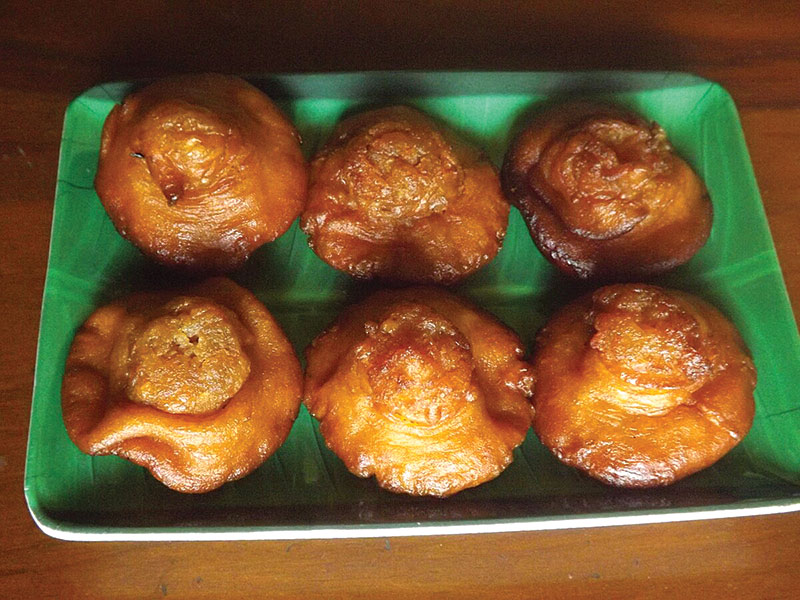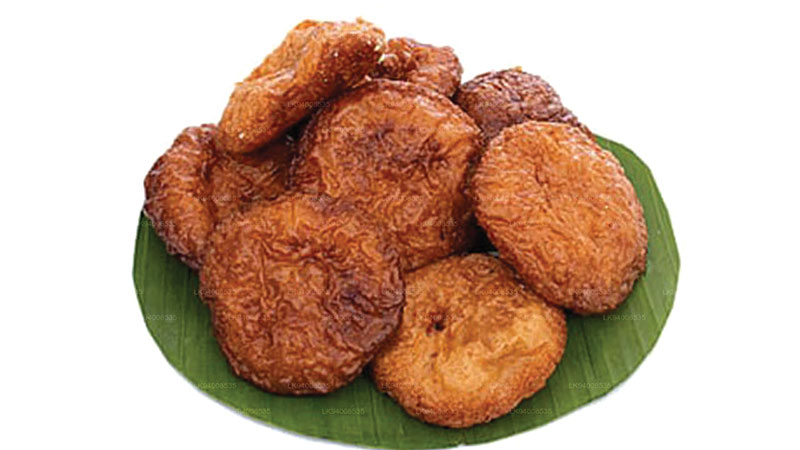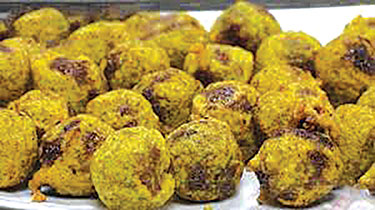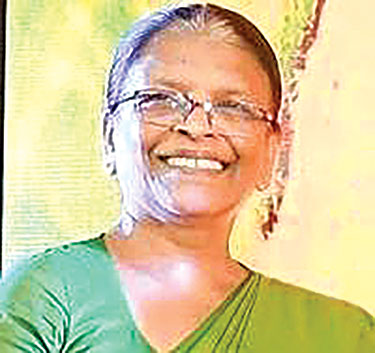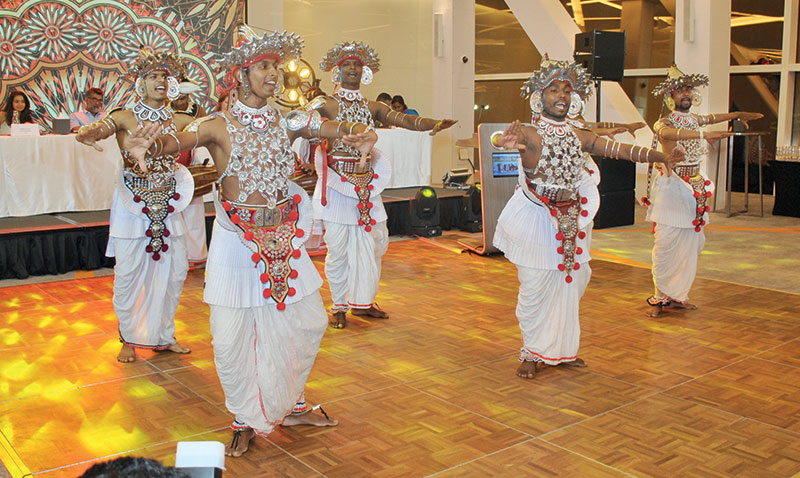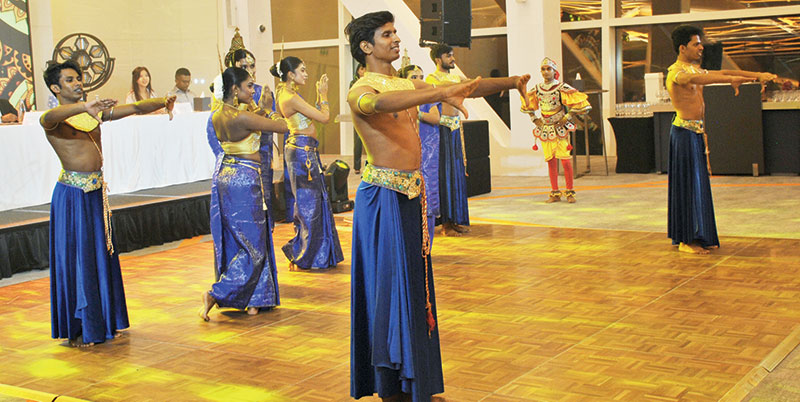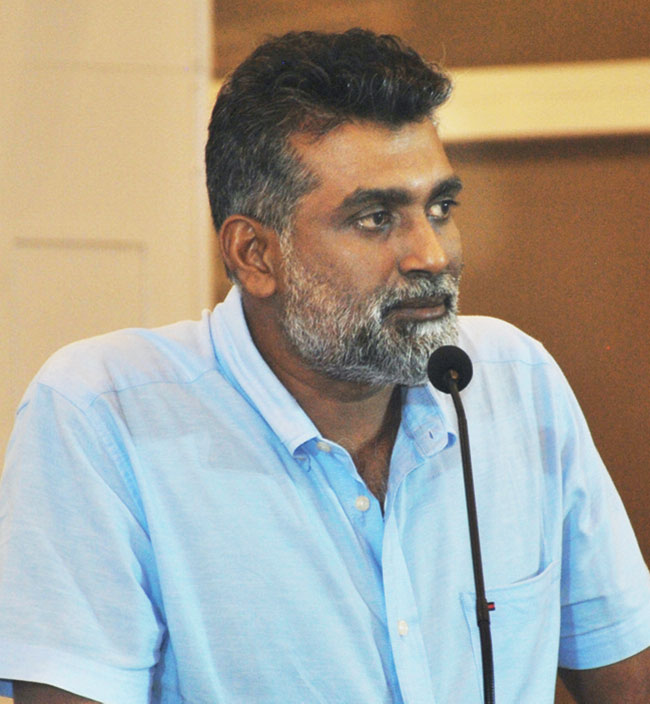Life style
Chai is tea, tea is Chai: India’s favorite hot drink
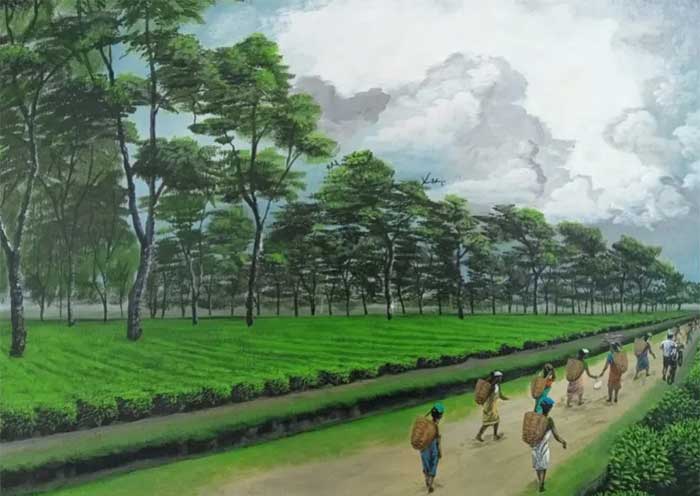
Indians took the tea the British were marketing to them, added spices, milk and sugar, and transformed it forever.
Chai can be enjoyed alone, but it excels in company
By Nupur Roopa
I remember jumping up to sit on the kitchen counter one afternoon. My five-year-old self wants to watch my mother making chai. She pushes me away from the gas stove but I am indignant and refuse to hop down, although I do move away a bit.The water bubbles. She adds sugar, then takes a flat steel grater, balances it on the edge of the pot and grates in adrak (ginger).
“Why do we add this?” I ask, watching the shreds fall into the bubbling water.
“Child, I have to hurry I don’t have time for your questions,” she says. I sulk but I know that, being a doctor, she has to get to the hospital on time. I will ask grandma, I tell myself.
The ginger threads dance in the water. Then she adds the tea leaves, turning the contents of the pot brown. Stirring, she adds milk and lets it simmer over a low flame, still stirring. After a few minutes, she removes it from the heat and covers it. I hop down to watch the next step. She strains it in cups, puts them on a tray, and carries it to the dining table.
I run out. I have no interest in tasting it but am proud, boasting to my friends: “I know how to make chai.” By the end of the day, I have memorized the process forever.I don’t want to ask to taste it because I know if I do, she will dilute it with more milk. “Children should not drink tea,” she would say. I hated that pale milky liquid.
The first time I tasted real chai, I was in grade three. I had scored good marks on a maths test and ran home that August afternoon to share the news with my mother and grandparents as they were having their chai. Basking in the appreciation and pats on my back, I asked if I could have chai. Mother refused, but grandfather smiled and poured some into a cup. I took it and breathed the aroma in deeply. I took one sip, then the second. The creamy, rich beverage warmed my heart and spirit and at that precise moment, I became a chai lover.
I yearned to make chai but wasn’t allowed. “What if you spill the boiling water and get burned,” my grandmother would fret. Finally, when I was in grade five, she reluctantly allowed me to make it under her supervision and soon I was making it alone.
I felt so accomplished, measuring water, grating ginger, and scooping sugar and tea leaves to add to the boiling water. Watching the tea leaves spinning with the ginger. Then adding the milk and watching it lighten the chai and simmer, steeping the flavours. “A good cup of chai needs a slow fire,” I was told, something I follow to this day.
Fast forward a few years, and I am on my way home on a bitterly cold January evening in Indore. The sun is on leave and the wind drills into my bones. I enter a silent, cold apartment – my mother isn’t back from the hospital yet and my grandmother has moved to live with my uncle since my grandfather passed away.
I need chai. Soon, I’m sitting with a hot, steaming cup, sipping it slowly. I close my eyes, savouring the sweet milk, sharp ginger and cinnamon. By then, I was experimenting with spices and adding what felt right at the moment – cinnamon, fennel, green cardamom and more. I would add lemongrass, holy basil and peppercorns if I had a cold or sore throat.
Chai is tea, tea is chai
Chai in India is a drink for no reason and for every reason, morning, afternoon, evening and night. It lifts your spirits while studying for the maths paper or learning chemistry formulas. It spices college gossip and fans rumours. A welcoming or parting drink, to convince friends and family to stay longer to share more stories.
It brings everyone together. It is served in homes, board meetings, college canteens, cafes and at weddings. “Chalo chai ho jaye,” (Let’s have tea) is heard every day.
Tea is chai in India. When, where, and how the first cup of chai was brewed is still up for debate, it is our elders who gives us an idea about the evolution of this delicious, addictive beverage.
Prerna Kumar, founder of ChaiVeda and purveyor of medicinal blends, says: “The early reference to tea is found in the Buddhist texts where the monks drank some kind of tea while fasting and meditating.
“They made tea from foraged tea leaves and perhaps added certain flowers to the decoction to help them feel calmer.”
But how did tea become chai and give birth to chaiwallahs (chai sellers) and chai drinkers?
I remember sitting with my grandfather and a history book in grade 10. He could make history dance in front of your eyes but I wasn’t enthusiastic about that day’s lesson. It wasn’t about kings or queens or battles, but the dull history of the everyday drink. How interesting could it be?
Grandfather pushes the book away and tells me to just listen.
“Tea,” he began, “comes from China.”
With that, he launched a history
lesson replete with scenes of Britishers drinking tea, tea traders at seaports and expansive green tea plantations in Assam.
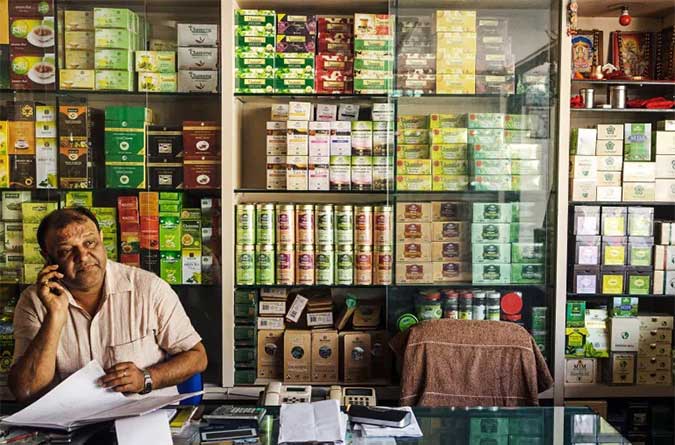
India is the largest consumer of tea in the world, the second-largest producer and the fourth-largest exporter – about 80 percent of its production is for domestic consumption
The English were introduced to tea when the Dutch East India Company began to import it into Europe in the 17th century, and its popularity gradually grew. By the 18th century, the English East India Company was importing enough tea from China that it was considered one of the company’s main assets. But there was worry over China refusing to renew the English trade
monopoly and a search for alternatives began.
English botanist Sir Joseph Banks suggested that the English in Assam grow tea there in 1778 after it was discovered that the Singpho tribe in Assam and Arunachal Pradesh drank a wild tea plant. But there was little interest until China broke the monopoly in 1833; two years later, tea growing in Assam began, food historian Mohsina Mukadam from Mumbai elaborates.
The Assam Tea Company was formed in 1839 and started marketing in Europe. Tea wasn’t a widely known beverage in India and it wasn’t until the start of the Great Depression in 1929 that the company looked at the Indian market to move its perishable stock, Mukadam added.
They started mandatory tea breaks in factories; tea-making demonstrations in markets and in homes where women could watch from the purdah (a screened enclosure); film screenings in villages to dole out free tea samples. Free tea on the purchase of saris. Tea sold at railway stations. But tea still wasn’t becoming as popular as hoped.
“The British were overconfident about changing our food habits,” grandfather smiled. Indians were wary of this new beverage. “We took it, added spices, milk, and sugar, transforming tea-making forever.”
Now I’m completely fascinated with the tea lesson.
Author and chef Sadaf Hussain, a lover of food history and stories, tells me later: “Britishers gave us the habit of tea but … we Indianised the recipe to suit our taste.
“We were used to drinking ‘kadha’ [herbal decoctions] for ages and we innovated tea into something similar by using spices, milk, and sugar. The addition of milk was … to increase the quantity as tea leaves were expensive and, India being an agricultural country, milk was easily available.”
Today, India is the largest consumer of tea in the world, the second-largest producer and the fourth-largest exporter. According to Tea Board India, the country produced 1.34 million tonnes of tea in 2021, about 80 percent of it for domestic consumption.
Masala chai
Basic masala chai is tea boiled in a mixture of milk, water, sugar, and any or all spices, like cardamom, cinnamon, clove, ginger or black pepper.
Every family has a special chai recipe. “Some like a mild version, others enjoy it strong,” chai-making is personal, Sadaf says. Some like ginger or cardamom, or both or neither, he explains.”There are around 20,000 ingredients that have been added to tea around the world,” shares Prerna. “It is mind-boggling … Anything that can be added to food can be added to tea.”
Masala chai can include herbs, spices and flowers – black pepper, cardamom, cinnamon, cloves, fennel, ginger, holy basil, liquorice, nutmeg, rose petals and more. The best chai is inspired by the masala dabba (box of spices), a quintessential presence in Indian kitchens. Ginger and black pepper are good for digestion and warming. Cloves, with their antiseptic properties, are good for sore throats and cardamom can elevate your mood.
I will never forget my Mumbai neighbour Sumathy Aunty’s masala chai. A new bride, I had reached Mumbai early that morning and was taking my stuff upstairs when the apartment next door opened and a lady draped in a sari dashed out, smiling over her shoulder in the way people in Mumbai do when they need to get somewhere.
I was new to Mumbai and wasn’t aware of what a feat it was to catch the trains crisscrossing the city. Every second counted and could delay you. That evening around seven, Sumathy Aunty knocked and asked me over for tea. What blossomed thereafter was a unique friendship between me, recently married and in my early twenties, and Sumathy Aunty, who was in her late fifties.
We would sip chai with farsan or chivda (fried lentil and flat rice spiced snacks) and sometimes, on rainy days, I would make mangodis (spiced lentil fritters), a speciality of central India, where I’m from. We exchanged recipes and cooking tips from our home states and she shared life skills to survive in Mumbai, a city that, for a small-town girl like me, was quite stressful.
Her chai was a caramel brew that always made me crave more. It had ginger, fennel seeds, cardamom and lemongrass, but there was more to it. When asked how she got it to taste this way, she attributed it to a mantra she chanted.
No two chais are the same, even the process and the mindset of the person making chai play a huge role, according to Prerna. “My husband is able to discern a difference if I am unhappy with him for some reason while making tea,” she laughs.
‘If you’re Indian, you must like tea’
South India has been a coffee stronghold for many years but things are starting to change as the humble chai made its way into people’s hearts and chai shops serving a variety ranging from ginger to masala and lemon hold pride of place along with “Kumbakonam coffee” houses, writer Chandrika R Krishnan shares.Every day is Chai Day. May 21 was declared International Tea Day in 2019 by the United Nations, but every day is Chai Day in India.
– Al Jazeera
Life style
Kevum – Befitting a King
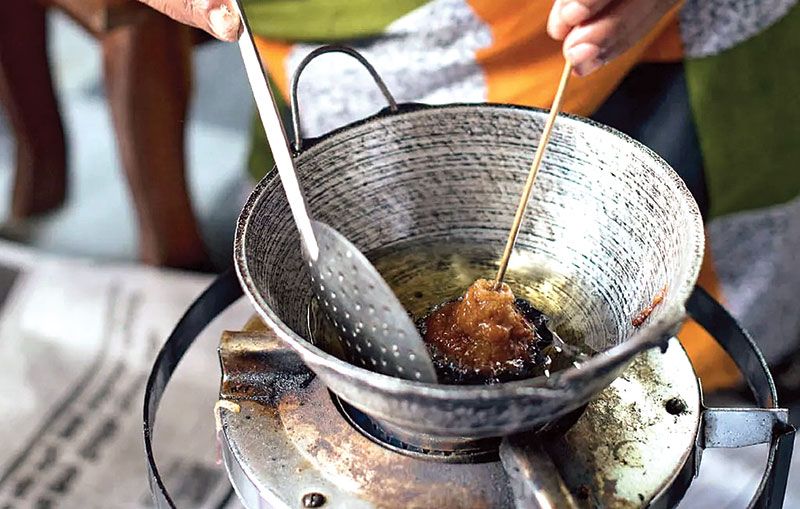
The avurudu table of any Lankan home is complete only when it is laden with kevum. Dating back to ancient times, many types of kevum are chronicled even in our classical texts. The Dutch rulers of the island are said to have relished them, some even asking if they grew on trees… A delicacy which was offered to visiting dignitaries, kevum was revered by our kings even in the battle field not only as an energy-booster but also as a wound disinfectant.
BY RANDIMA ATTYGALLE
The culmination of Avurudu preparations in my childhood with my grandparents was marked by the ritual of Kevum-making. Athamma would ‘book in advance’ the kevum specialist Soida Hami (Soida aachchi to us children), and install a special hearth in her back verendah for the grand moment. I would watch Soida aachchi in wonderment as her thick batter of rice flour and best of kithul treacle shaping into kevums in a hot wok of coconut oil. The long kevum koora in her nimble fingers would achieve the feat of the perfect konde. It was almost a rite of reverence, so much so I was not supposed to talk to her until the first batch of Konda-kevums was completed. Like many old-folk of her vintage, Soida aachchi believed that talking while the first few kevums are done would result in a flawed product.
She would then place each perfect Konda kevuma on a banana leaf for the excess oil to drain. Once the whole exercise was completed, she would place Konda-kevum in large earthen pots and store them in the dum messa or the storage area above the main hearth of the kitchen. She would spare me only one kevuma and the rest had to wait until the auspicious time on avurudu day!
Travellers’ records
Robert Knox an English sailor who was held in captive in the court of the Kandyan King Rajasinghe II and one of the prolific chroniclers of ancient Ceylon in his famous work, An Historical relation of the Island Ceylon documents on the sweet meats of Lankans with a special account of kevum.
‘They have several sorts of sweet-meats. One they call Caown. It is like to a fritter made of Rice-flower and Jaggory. They make them up in little lumps and lay them upon a leaf, and then press them with their thumbs and put them into a frying-pan and fry them in Coker-nut Oyl or Butter. When the Dutch came first to Columba, the King ordered these Caown to be made and sent to them as a royal treat. And they say, the Dutch did so admire them, that they asked if they grew not upon trees, supposing it past the Art of man to make such dainties.’ (Spelling as in the original Knox)
The account of Knox enables rich insights into this wonder of a sweet meat which enthralled many a traveller to the island including dignitaries. The European trader Cosmas who visited Ceylon in 545-550 AD, documents that along with gems, Kevum and Kalu dodol from Ceylon were taken to the Roman court of Emperor Claudius during the sixth century.
- Mun kevum
- Konda kevum
- Athirasa
Classical literature
Kevum dates back to ancient times and our classical texts such as the Ummagga jatakaya, Pujawaliya and Saddharma Ratanawaliya bear evidence to this fact. “Originally known as poopa this sweet meat came to be known as kevum in the Dambadeniya-Kurunegala era. Jathaka atuwa getapadaya mentions 18 kinds of sweet-meats found in the ancient Sri Lanka and among them are several types of kevum such as sendi kevum, mal kevum, athirasa, pena kevum, raa-kevum,” says Prof. Kusumalatha Lankamulla from the Department of Sinhala and Mass Communication at the University of Sri Jayewardenepura.
This scholar with research interest in Culture, Traditional and Modern Literature goes onto note that Mahawamsa in its 32nd chapter refers to two types of kevum in the context of alms offered by King Dutugemunu. The two types- thel kevum and maha de kuvum mentioned, were fried in ghee. “Many of our classical texts mention kevum in multiple festive contexts beyond avurudu. In Ummagga jathakaya, kevum is mentioned as a fitting gift to be taken when visiting parents. Saddharma Ratanawaliya refers to boxes of kevum or kevum pesa.“
An energy booster
Among the popular kevum types found today are Konda kevum, athirasa, mun-kevum, naran kevum and hendi-kevum. Although the ingredients used for each type may slightly differ, rice flour and treacle (now largely replaced with sugar) remain common to all. The much sought after Konda kevum which is relatively a later addition to the range of kevum found here at home is believed to have originated during the Kandyan period says Prof. Lankamulla. “During the Kandyan period, men were prohibited from cutting their hair off and they had to tie it in form of a knot on top of their heads. Konda kevuma is believed to have been inspired by this practice.”
Traditionally, Sinhalese soldiers were given a bag of kevum when going to war. History has it that King Dutugemunu went a step ahead and used kevum to treat wounded soldiers. His army used to prepare kevum months in advance and keep them exposed to air so that the mould can grow on them.
This mould in today’s language had ‘antibiotic properties’ and was used on the wounds of the soldiers to prevent them from festering. “In a bid to undermine the pride of place given to kevum as a super food by the locals, the British coined the famous derogatory adage: ‘Sinhalaya is a fool but is an ace at eating kevum’. (Sinhalaya modaya-kevum kanna yodaya)
Steeped in tradition
Superstitious beliefs surrounding the process of kevum-making are not uncommon and these vary from region to region in the island, says Prof. Lankamulla. Regardless of the region, several common traditions were followed by our ancestors and these still continue to be observed in several parts of the country, she says. “The frying pan with coconut oil to prepare the kevum was kept on fire at an auspicious time and village matriarchs who were highly skilled were mobilized for the occasion. Women also believed that they must refrain from talking when the first kevum is being made. For centuries, the first kevum was considered to be the ‘konduru kevum’, dedicated to the sledge-fly or the konduruwa. The village women would hang the first kevum up for the insects so that the rest would be unspoilt.”
With the passage of time, many Lankans, particularly city-dwellers depend on commercially available avurudu kevili including kevum. Although kevum is synonymous with avurudu, today people get to enjoy it round the year thanks to many sweet meat kiosks found in cities. Although these outlets have best sales during avurudu, they get plenty of orders from Lankans travelling abroad or coming home for vacation at other times of the year as well.
One such die-hard kevum fan is Uthpala Ranatunga from Ottawa, Canada. “My Loku amma (oldest aunt) makes it a point to pack me a parcel of best quality Konda kevum to take with me whenever I’m in Sri Lanka for a vacation.
I deep-freeze them for longer use and eat them sparingly,” says Uthpala to whom kevum is always a strong reminder of home. “Each time I indulge in them I feel nostalgic and miss home.”
Kevum is an integral part of the Lankan culture, finding its way from ancient classical literature to that of the contemporary including children’s literature and arts. The much-loved sweet meat is celebrated in the work of Sybil Wettasinghe – the iconic story teller and illustrator.
Come avurudu, we often hear the intonation of Lionel Ranwala, the eminent musician, vocalist and an authority on Sri Lankan folk music, whose tribute to the enduring legacy of this delicacy is one of the best in our times:
Me avurudu kale -sinaha weyan rale
Thel ihirunu kewum gediya wage…
Fashion
Festive glamour at Nethara

Nethara Collection ,is a world of export quality garments in Diulpitiya, Boralesgamuwa, is infused with an ultra festive spirit this season catering to the women of today. Unbelievable offers and discounts from Nethara for Sinhala anTamil new year. On selection of women’s clothing, ranges from casual options to formal occasion wear,all at friendly prices,to enhance your wardrobe this festive season.
Nethara collection, started small in 2017, but soon it outgrew, today with an ever increasing customer base, branded and non branded clothing this shopping centre has become very popular. Export quality , stylish dresses, crop tops, fancy blouses, trousers and many more to flaunt yourself and enhance your wardrobe.Their extensive collection, maintain low pricing allowing everybody to have a chance to shop till they drop dead. From casual wear to formal wear,they have women to men’s items like tee shirts, shirts for every occasion.
Nethara clothing has long remained a name that has struck a chord with Sri Lankan shoppers. “We believe our success has been based up on the premise that absolute sincerity towards customers and no matter what the economic situation that prevails, we try our level best to keep our prices low and within everybody’s budget, said managing director, Nethara Collection Sampath Kumara.
This April season Nethara collection brings an all new collection of export quality seasonal wear. Celebrate the season with exclusive offers made just for you! Dresses, blouses, casual, formal wear denim, men’s shirts and many more… world of limitless style and joy!
This festive season Nethara unwraps a celebration of warmth, style and sophistication. Immense yourself in a vibrant festive atmosphere as you explore thier collection under one roof 345 Boralasgamuwa With a focus on quality, affordability and customer satisfaction, Nethara export quality boutique invites you to celebrate the Sinhala and Tamil New Year in style.
(Zanita)
Life style
Sri Lanka tourism unveils strategic vision
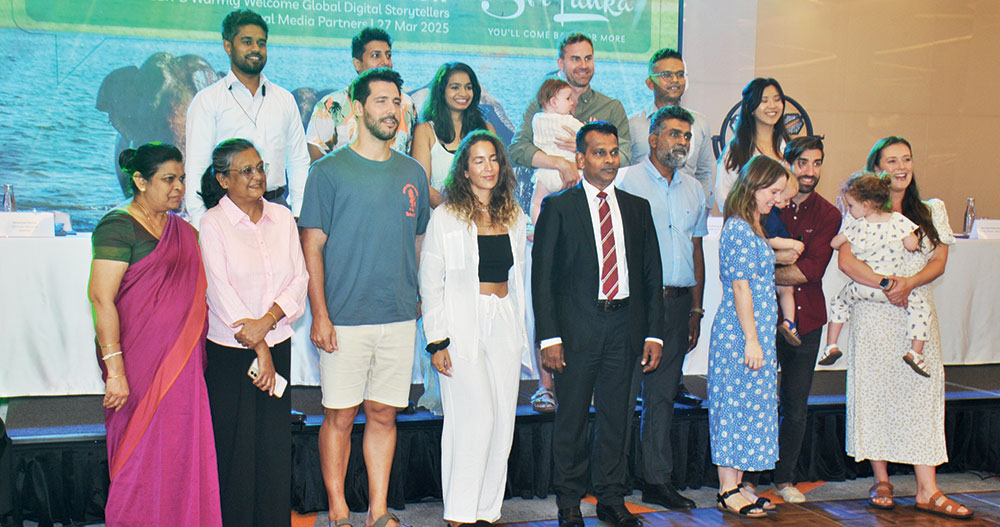
Sri Lanka Tourism Bureau hosted a landmark event at cinnamon Life for an ambitious campaign to spotlight Sri Lanka as a top travel destination. This initiative hosted international influencers and local media to capture the unique charm of Sri Lanka’s destinations. These travel influencers will share thier real time content across platforms like Instragrams Tik Tok and youtube amplifying Sr Lanka as a must visit destination. Many media personal, bloggers and influencers participated in this event which will take them on a tourism travel featuring some of Sri Lanka’s top destination.
Sri Lanka Tourism Promotion Bureau (SLTPB) hosted a landmark event at the Cinnamon Life Hotel, Colombo. The event was led by . Deputy Minister of Tourism, Prof. Ruwan Ranasinghe, with the participation of SLTPB Chairman Buddika Hewawasam, officials, travel influencers and their families, as well as journalists specializing in tourism sector reporting. The gathering set the stage for transformative initiatives aimed at bolstering Sri Lanka’s tourism sector and redefining its global image.
In his opening remarks, Buddika Hewawasam underscored the challenges facing the tourism sector, particularly the seasonal dip in arrivals during the summer months. “The next few years will be the most challenging period for all of us,” Hewawasam stated, emphasizing the need for international collaboration and strategic development. He further highlighted the critical role played by international travel influencers and media professionals in raising awareness of Sri Lanka’s hospitality and inspiring tourists worldwide to visit.
- Dileep Mudadeniya
- Deputy Minister of TourismProfess or Dr Ruwan Ranasinghe
- Guests
The Deputy Minister of Tourism, Prof. Ruwan Ranasinghe, detailed the innovative nature of the campaign and its importance in showcasing Sri Lanka’s rich heritage, natural beauty, and diverse travel experiences to mainstream and emerging tourism markets.
During the event, several prominent travel influencers shared their thoughts about Sri Lanka’s uniqueness as a destination. They highlighted that Sri Lanka is a country where travellers don’t need to worry about finding incredible experiences—nature has already done the hard work. The influencers remarked on Sri Lanka’s unparalleled diversity, noting that it is possible to experience a range of climates within just a few hours by travelling to different parts of the island. From sun-soaked beaches to misty highlands, and from lush forests to cultural treasures, Sri Lanka offers a world of adventures in a compact and accessible setting.
In comparison to destinations like Bali, which some influencers noted as overcrowded, Sri Lanka stands out with stable and balanced tourism activities. The event attendees were thrilled by the country’s warm hospitality, authentic DDirector cuisine with an impressive variety, long history, and rich culture. These qualities make Sri Lanka not only inviting but genuinely unforgettable for visitors.
The travel influencers in attendance expressed strong confidence in their ability to share this powerful message with the world. They were determined to shape international travel trends by showcasing Sri Lanka’s unique appeal, while also helping to attract new types of guests. The influencers represented a diverse range of travel segments, including family travellers, solo female travellers, honeymooners, and adventure seekers. Their efforts were supported by Sri Lanka Tourism officials and journalists representing both local and international media agencies.
The ‘Sri Lanka, A Story for Every Season’ campaign represents SLTPB’s first large-scale effort to boost summer travel through digital storytelling and influencer collaboration.
Featuring a curated destination familiarization tour, the campaign will spotlight wildlife safaris, cultural heritage, spiritual pilgrimage sites, scenic landscapes, and adventure tourism. Influencers will produce high-impact content for platforms like Instagram, YouTube, and Facebook, reaching over 2.2 million travel enthusiasts globally.
Sri Lanka Tourism shared impressive winter peak season results, with international arrivals reaching 665,295 by March 23, 2025—a marked increase compared to the previous year. These figures illustrate the sector’s potential for growth, and the campaign aims to sustain momentum throughout the summer months.
The event was a call to action for stakeholders to unite in elevating Sri Lanka’s global tourism appeal. With plans to generate over LKR 32 million worth of media coverage and connect with diverse travel segments, the campaign underscores Sri Lanka’s commitment to redefining itself as a leading destination for year-round travel.
By Zanita Careem
Pix by Darmasena Welipitiya
-

 Business4 days ago
Business4 days agoColombo Coffee wins coveted management awards
-

 Business6 days ago
Business6 days agoDaraz Sri Lanka ushers in the New Year with 4.4 Avurudu Wasi Pro Max – Sri Lanka’s biggest online Avurudu sale
-

 Features5 days ago
Features5 days agoStarlink in the Global South
-

 Business6 days ago
Business6 days agoNew SL Sovereign Bonds win foreign investor confidence
-

 Features2 days ago
Features2 days agoSri Lanka’s Foreign Policy amid Geopolitical Transformations: 1990-2024 – Part III
-
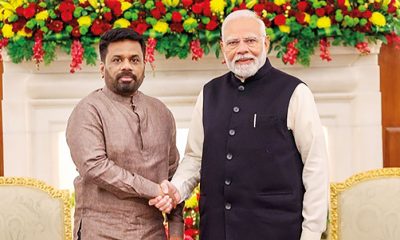
 Features5 days ago
Features5 days agoModi’s Sri Lanka Sojourn
-

 Midweek Review2 days ago
Midweek Review2 days agoInequality is killing the Middle Class
-

 Features4 days ago
Features4 days agoSri Lanka’s Foreign Policy amid Geopolitical Transformations: 1990-2024 – Part I





